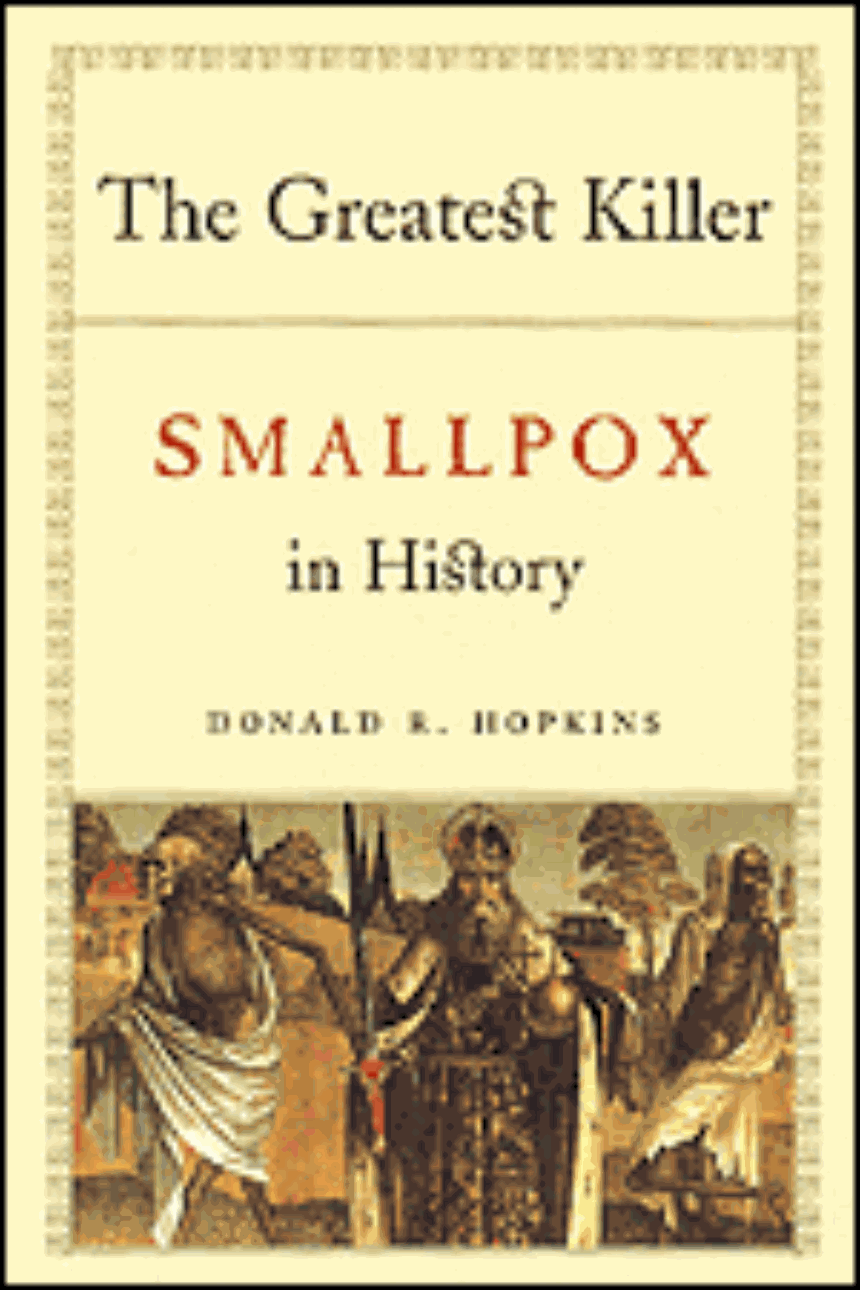The Greatest Killer
Smallpox in History
Once known as the "great fire" or "spotted death," smallpox has been rivaled only by plague as a source of supreme terror. Although naturally occurring smallpox was eradicated in 1977, recent terrorist attacks in the United States have raised the possibility that someone might craft a deadly biological weapon from stocks of the virus that remain in known or perhaps unknown laboratories.
In The Greatest Killer, Donald R. Hopkins provides a fascinating account of smallpox and its role in human history. Starting with its origins 10,000 years ago in Africa or Asia, Hopkins follows the disease through the ancient and modern worlds, showing how smallpox removed or temporarily incapacitated heads of state, halted or exacerbated wars, and devastated populations that had never been exposed to the disease. In Hopkins’s history, smallpox was one of the most dangerous-and influential-factors that shaped the course of world events.
In The Greatest Killer, Donald R. Hopkins provides a fascinating account of smallpox and its role in human history. Starting with its origins 10,000 years ago in Africa or Asia, Hopkins follows the disease through the ancient and modern worlds, showing how smallpox removed or temporarily incapacitated heads of state, halted or exacerbated wars, and devastated populations that had never been exposed to the disease. In Hopkins’s history, smallpox was one of the most dangerous-and influential-factors that shaped the course of world events.
398 pages | 36 halftones, 15 line drawings | 6 x 9 | © 1983, 2002
History: American History, Asian History, European History, General History, Latin American History
Table of Contents
Illustrations
Introduction—January 2992
Preface
Acknowledgments
One Variola Rex
Two The Most Terrible of All
the Ministers of Death
Three Heavenly Flowers
Four Kiss of the Goddess
Five The Spotted Death
Six The Great Fire
Seven A Destroying Angel
Eight Erythrotherapy and Eradication
Chronology
Notes
Bibliographical Note
Reference
Index
Introduction—January 2992
Preface
Acknowledgments
One Variola Rex
Two The Most Terrible of All
the Ministers of Death
Three Heavenly Flowers
Four Kiss of the Goddess
Five The Spotted Death
Six The Great Fire
Seven A Destroying Angel
Eight Erythrotherapy and Eradication
Chronology
Notes
Bibliographical Note
Reference
Index
